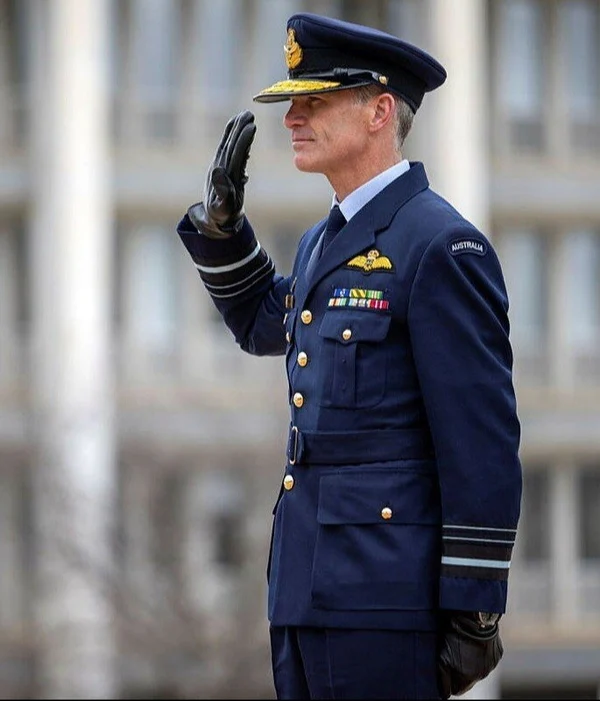Book title. Action! Action! Action! A Short History of the Employment of Australian Artillery, 1871-2021, by Nicholas Floyd and Paul Stevens. (See picture of cover).
The book is about to be launched and will be of interest to veterans, particularly those with artillery service. It is a short history, covering the first 150 years of Australian Artillery. It has been compiled for the education of new Artillery soldiers and officers; presented in an easy-to-read style.
Artillery troops have been part of the force, everywhere the Australian Army has deployed. So, the book also outlines 150 years of Australian Army history, told through the “Artillery story”. It will be an interesting read for anyone wanting an overview of the Australian Army did over the period.
The Royal Australian Artillery Historical Company has published the book, with Big Sky Publishing, Sydney.
Launch. On 1st of August 2024, in Canberra.
Available for purchase now. Purchasing details are on the Royal Australian Artillery Historical Company website https://artilleryhistory.org/
Ukraine’s Foreign Minister Dmytro Kuleba is on a mission to find “common ground” with China to end the war with Russia. Kuleba’s visit to China is the first by a Ukrainian foreign minister since the war began. During his visit, he met with Chinese Foreign Minister Wang Yi in Guangzhou, aiming to find a mutual basis for peace. Kuleba believes that a just peace in Ukraine aligns with China’s strategic interests and hopes to secure China’s support for a peace conference before the US presidential election.
China maintains close ties with Russia and has a unique stance on the conflict. Although China did not attend a recent peace conference in Switzerland, it is actively seeking to facilitate a peace deal between Ukraine and Russia to boost its diplomatic standing over the US, which is currently facing significant diplomatic scrutiny both internally and externally. China’s push for an end to the war considers the interests of both sides, a position at odds with Ukraine and Western countries that demand a Russian withdrawal.
China has recently achieved diplomatic success by brokering the Beijing Declaration, an agreement among Hamas, Fatah, and other Palestinian groups to form an interim national reconciliation government for post-war Gaza. If China manages to broker a peace deal between Russia and Ukraine, its diplomatic influence will significantly increase. The global community may then view China as a nation capable of brokering peace deals, in contrast to nations known for starting conflicts abroad.
In 1967 tensions in the Middle East were raised once again after a canal constructed by Syria threatened Israel’s water supply. This soon led to a war against Israel with Egypt and Jordan allying with Syria, who were also being supported by Iraq and Lebanon. Despite being underestimated and outnumbered, Israel demonstrated its military prowess and pulled off a swift and decisive victory.
Experience the intensity and excitement of Exercise #PitchBlack24 with our week two highlight video! Our Imagery Specialists will take you behind the scenes at, starting with the first wave of flying operations to the Mindil Beach Flying Display.
The Australian government has halted plans to develop the $800m Ghost Bat drone as a lethal weapon after Boeing Australia was excluded from a US government program to supply 1000 autonomous combat jets to work alongside manned fighters.
Initially seen as Australia’s most promising “killer drone,” the Ghost Bat will now be designed for intelligence, surveillance, and reconnaissance (ISR) missions, according to senior government sources. This pivot was anticipated by the government, who decided in advance to shift the drone’s primary mission in collaboration with Boeing.
A government source familiar with the program stated that developing the Ghost Bat as an ISR drone meets a critical Defence requirement and avoids the complexities of establishing “rules of engagement” for its use of weapons. Defense analysts had warned that the Ghost Bat risked becoming an expensive “orphan” if developed as an armed platform outside the US Collaborative Combat Aircraft (CCA) program.
The US Air Force selected Anduril and General Atomics as top candidates for manufacturing and testing under the CAA program, sidelining Boeing Australia. The MQ-28A Ghost Bat, the first military aircraft designed and built in Australia in 50 years, has received strong backing from successive governments. Earlier this year, the Labor government allocated an additional $400m to produce three “block 2” test aircraft by the end of next year, emphasizing the drone’s potential combat roles.
The Ghost Bat program is politically significant, ensuring 350 ongoing jobs and a new production facility at Wellcamp Business Park, west of Brisbane. Despite disappointment over not advancing in the US CCA program, Boeing remains committed to developing next-generation autonomous combat aircraft for both US and global military customers. Work will continue on the Ghost Bat and the MQ-25 Stingray, an aerial refueller designed for aircraft carriers.
 Boeing Australia highlighted the modular and open design of the Ghost Bat, enabling it to support various Australian Defence Force (ADF) missions in line with the National Defence Strategy. This strategy, unveiled in April, promises continued investment in uncrewed and autonomous systems, including the Ghost Bat, to provide asymmetric surveillance and strike capabilities.
Boeing Australia highlighted the modular and open design of the Ghost Bat, enabling it to support various Australian Defence Force (ADF) missions in line with the National Defence Strategy. This strategy, unveiled in April, promises continued investment in uncrewed and autonomous systems, including the Ghost Bat, to provide asymmetric surveillance and strike capabilities.
The Ghost Bat program has received $849m in funding, with just under $500m spent so far. Malcolm Davis, an analyst at the Australian Strategic Policy Institute, noted that the original concept for the Ghost Bat aimed to extend the reach and firepower of crewed aircraft as a flying “missile truck” and electronic warfare platform. He criticized the shift to an unarmed platform as undervaluing the concept and called for an evolved, larger version with combat capabilities.
Strategic Analysis Australia research director Marcus Hellyer argued that an unarmed Ghost Bat could still perform combat roles, such as acting as “sophisticated flying decoys” or carrying electronic warfare payloads to jam enemy radar systems. He emphasized the importance of designing the drone to incorporate new sensors, weapons, or tools easily.
The government has allocated $10bn towards uncrewed and autonomous capabilities over the next decade, introducing several new drones for the ADF. These include the US-made Switchblade 300 loitering munition for the army, capable of delivering a grenade-sized warhead over distances of up to 20km. Australian company Sypaq and Germany’s Quantum Systems will supply small tactical drones to the ADF by next year.
In addition, the government has expedited the delivery of $2bn worth of landing craft for the army. The first of 18 medium-sized landing craft will be delivered by 2026, with the delivery of eight heavy landing craft moved up to 2028 from the original 2035 schedule, according to Defence Industry Minister Pat Conroy.
1942: Japanese Submarine I-25 – and its Glen reconnaissance aircraft over: Sydney, Hobart, Wellington, Auckland, Suva and Alaska
In mid-February 1942, a Japanese “mother’ submarine shelled Newcastle, and launched three mini-submarines into Sydney Harbour. On 17 February 1942, a Japanese “mother submarine” – I-25 (captain: Lieutenant Commander Akiji Tagami; 98 crew, 108 metres in length – three times the displacement of a German U-boat), launched a “collapsible” Yokosuka E14Y “Glen” float-plane that overflew parts of Sydney (La Perouse, Botany Bay, North Head – reportedly causing consternation in harbour-side suburbs. The unarmed Glen reconnaissance float-plane had a crew of two, and could be dismantled – broken-down into twelve pieces, and stored on the submarine in four water-tight “hangar “compartments forward of the submarine’s conning tower. Once assembled, it was launched from rails by a catapult or off-loaded by a derrick and took off from the sea-surface. Its mission was reconnaissance of enemy naval vessels – principally seeking warships of the US Navy.
From the Sydney area, the I-25 submarine sailed south into Bass Strait and anchored off Cape Wickham (King Island). On 26 February 1942, the Glen aircraft (pilot: Warrant Flying Officer Nobuo Fujita; observer/gunner Shoji Okuda, was launched and overflew Point Lonsdale, Geelong, Laverton and Melbourne (see the earlier item for detail on this three-hour flight over Victorian objectives). Leaving Bass Strait, the I-25 sailed on the surface down the east coast of Tasmania to Great Oyster Bay – the Bay is about 35 km long by 15 km wide and is protected by the red granite cliffs and steep headlands of the Freycinet Peninsula and Schouten Island. The Glen float-plane was placed onto the sea by I-25’s derrick – ie not launched from the submarine’s catapult. Flying up the Derwent River and overflying Hobart and the Mount Wellington area, some activity was noted – including five cargo ships but no warships. The Glen aircraft later did flights from the I-25 over Wellington (8 March 1942),
Auckland (13 March) and Suva (17 March) – before returning to its base at Kwajalein in the Marianas/Marshal Islands. In a subsequent mission by the I-25 on 9 September 1942, its Glen float-plane dropped two incendiary bombs into the forests of Oregon (US) in attempts to create forest fires. According to Wikipedia, this was the only time that the mainland United States was ever bombed by enemy aircraft – and the second continental territory to be bombed as such during wartime, ie after the bombing raid on Dutch Harbor in Unalaska (Alaska) by aircraft from two Japanese aircraft carriers on 3-4 June 1942.
The I-25 was subsequently sunk by US destroyers near Espiroto Santo (Vanuatu) in October 1943 – and all hands were lost.
During his address at the handover ceremony held at Russell Offices, Canberra, former F/A-18 fighter pilot and incoming Vice Chief, Air Marshal Robert Chipman, AO, CSC, expressed a profound sense of pride and duty. Air Marshal Chipman emphasized his commitment to championing all sailors, soldiers, aviators, and Defence public servants. He underscored the importance of supporting the entire Defence community, acknowledging their dedication and sacrifices.
Air Marshal Chipman also pledged to implement the learnings from the Royal Commission into Defence and Veteran Suicide. He stressed the need for continuous improvement and a strong focus on the well-being of both current and former Defence personnel. His address highlighted his dedication to ensuring that the Australian Defence Force (ADF) remains a supportive and resilient organization, capable of addressing the challenges faced by its members.
Defence Equipment and Support (DE&S) successfully tested Raytheon’s High-Energy Laser Weapon System (HELWS) on a British Army Wolfhound vehicle at Porton Down. This first UK test demonstrated the HELWS’s capability to track and engage targets while mounted on a land vehicle.
The HELWS is designed to counter NATO class 1 drones and integrate seamlessly with existing air defence systems. Raytheon UK’s chief executive, James Gray, highlighted the collaborative effort with British SMEs that enabled the rapid delivery of this technology.
Defence Secretary John Healey emphasized the importance of continuing technological advancements to ensure national security and create skilled jobs. The demonstrator program, managed by Team Hersa, aims to rapidly introduce innovative weapon systems to the UK Armed Forces.
Raytheon’s HELWS has proven combat effectiveness with US forces, logging over 40,000 testing hours and downing more than 400 targets. The next phase involves British Army soldiers familiarizing themselves with the system to refine future capabilities.
Picture: An RCV Light at desert testing. (Original image by Savannah Baldwin/ US Army; Code image by Markus Spiske via Pexels; Graphic by Breaking Defence)
Earlier this year, US Army soldiers tested prototype Robotic Combat Vehicles (RCVs) at Fort Irwin, California. This demonstration highlighted a key issue: the technology currently does not keep human soldiers far enough from danger.
The Army’s long-term goal is for autonomous software to handle most of the navigation for its future robotic fleet. However, since this technological challenge is expected to take years to resolve, the initial RCVs deployed will rely on a radio “tether.”
At Fort Irwin, this setup required five soldiers in a trailing vehicle to control two frontline RCVs. This configuration included one driver and two teams of two, each remotely operating an RCV, and the vehicles had to stay close enough to maintain the radio link. This proximity nearly defeats the purpose of using RCVs to perform dangerous tasks under fire, as envisioned by the Army.
“We need to get [soldiers] a little further back,” said Brig Gen. Geoffrey Norman, then the director of the Next-Generation Combat Vehicle Cross-Functional Team, shortly before retiring earlier this month. “If they’re inside the direct fire range, whether it’s from a cannon, direct fire, or anti-tank guided missiles, those control vehicles are very vulnerable.”
The Army has been aware for several years that its backup teleoperation setup poses technical challenges. Recent demonstrations, including one at this year’s Project Convergence capstone event, highlighted the severity of these challenges as the Army prepares to potentially field RCVs in fiscal 2028. With the future of autonomy unclear, the service is now considering changing mission sets, concepts of operations, and even technical solutions to make the tether work.
Despite these hurdles, Army leadership is determined to press ahead, convinced that field deployment is essential to advancing the development of its robotic fleet.
“It’s our first robot system like this [that] we’re actually going to keep,” Army acquisition head Doug Bush reiterated. “So, I’m not surprised that there’s turbulence in the key technologies, including the radio comm link, which is foundational to the whole thing and having that capability … being robust enough.”
“A ground environment is the hardest thing possible, it’s way harder and way harder on equipment than a [unmanned aerial vehicle] UAV,” Bush added.











